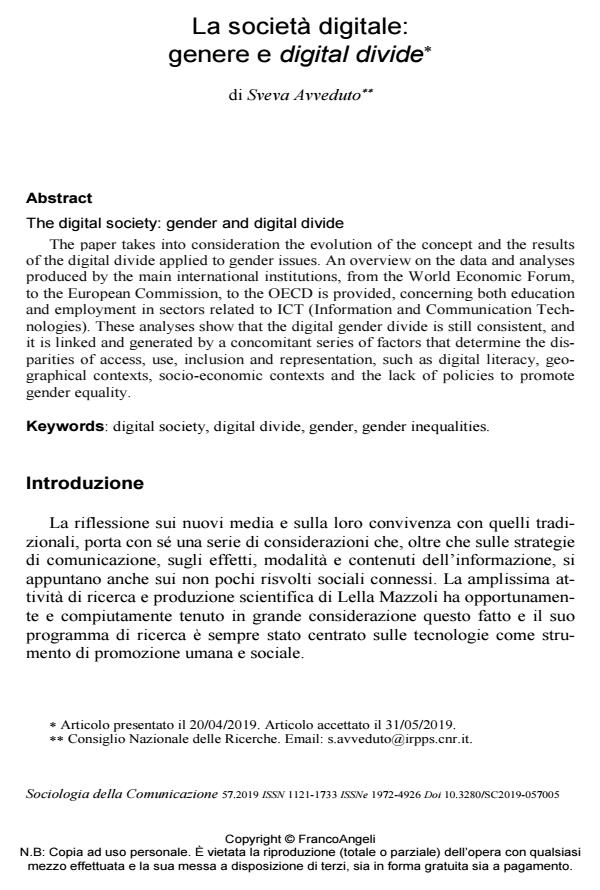La società digitale: genere e digital divide
Titolo Rivista SOCIOLOGIA DELLA COMUNICAZIONE
Autori/Curatori Sveva Avveduto
Anno di pubblicazione 2019 Fascicolo 2019/57
Lingua Italiano Numero pagine 19 P. 65-83 Dimensione file 626 KB
DOI 10.3280/SC2019-057005
Il DOI è il codice a barre della proprietà intellettuale: per saperne di più
clicca qui
Qui sotto puoi vedere in anteprima la prima pagina di questo articolo.
Se questo articolo ti interessa, lo puoi acquistare (e scaricare in formato pdf) seguendo le facili indicazioni per acquistare il download credit. Acquista Download Credits per scaricare questo Articolo in formato PDF

FrancoAngeli è membro della Publishers International Linking Association, Inc (PILA)associazione indipendente e non profit per facilitare (attraverso i servizi tecnologici implementati da CrossRef.org) l’accesso degli studiosi ai contenuti digitali nelle pubblicazioni professionali e scientifiche
The paper takes into consideration the evolution of the concept and the results of the digital divide applied to gender issues. An overview on the data and anal-yses produced by the main international institutions, from the World Economic Forum, to the European Commission, to the OECD is provided, concerning both education and employment in sectors related to ICT (Information and Communi-cation Technologies). These analyses show that the digital gender divide is still consistent, and it is linked and generated by a concomitant series of factors that determine the disparities of access, use, inclusion and representation, such as digi-tal literacy, geographical contexts, socio-economic contexts and the lack of poli-cies to promote gender equality.
Parole chiave:Digital society, digital divide, gender, gender inequalities.
- Digital divide, e-government and trust in public service: The key role of education Diego Mesa, in Frontiers in Sociology 1140416/2023
DOI: 10.3389/fsoc.2023.1140416
Sveva Avveduto, La società digitale: genere e digital divide in "SOCIOLOGIA DELLA COMUNICAZIONE " 57/2019, pp 65-83, DOI: 10.3280/SC2019-057005